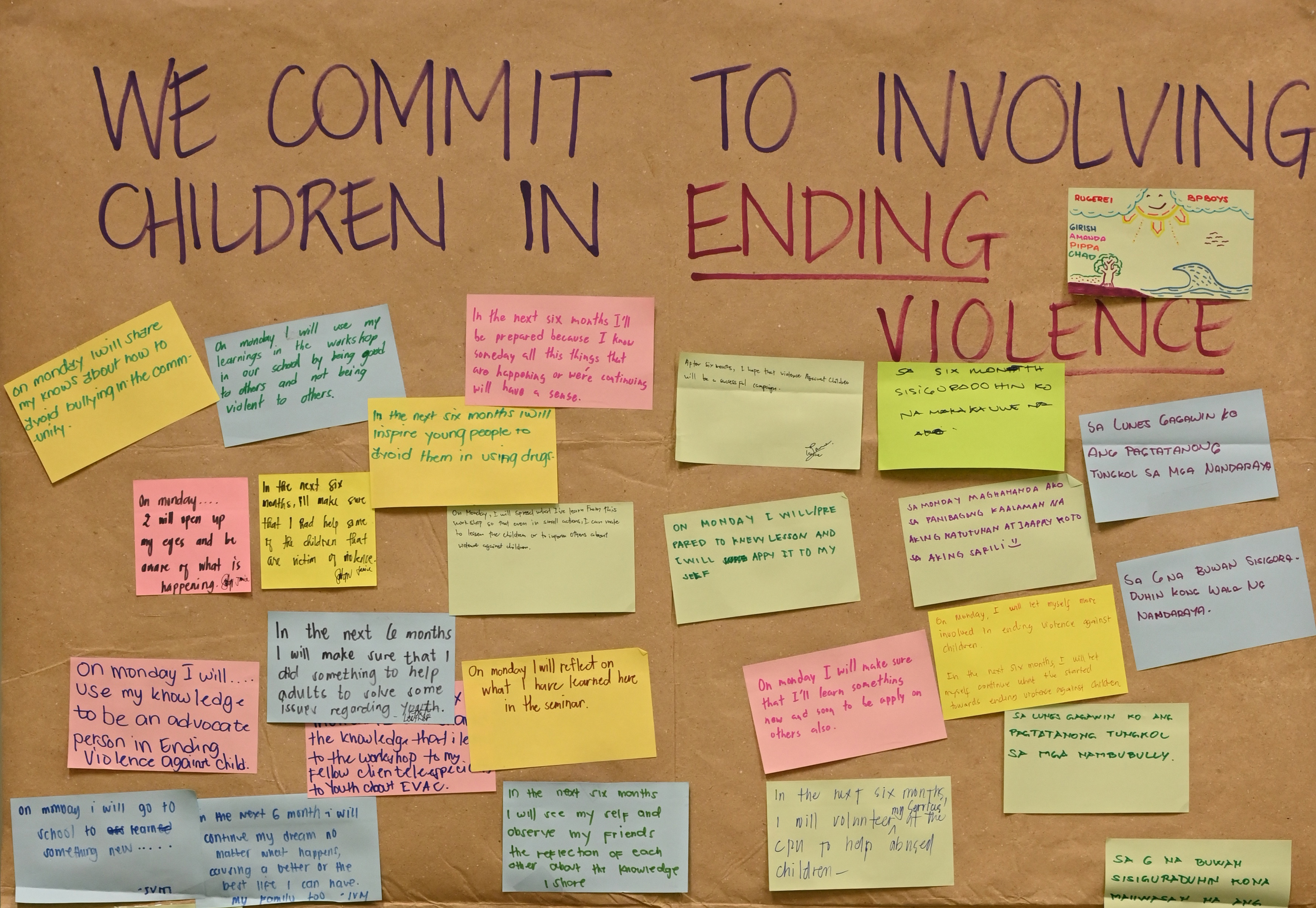Child Centred Indicators for Violence Prevention: A Living Lab

This project piloted a Living Lab – a tested, multi-stakeholder, co-research and co-design approach – to develop child-centred indicators for violence prevention in the City of Valenzuela in greater Manila, Philippines. Using child-centred, participatory research and engagement methods, this process brought child and adult stakeholders together in a series of 14 participatory workshops to creatively explore children’s experiences and perceptions of violence, to map their aspirations for change, to ideate strategies for addressing violence in their communities, and to develop child-centred indicators against which violence reduction can be measured. The first phase was in 2019, in collaboration with End Violence, the City of Valenzuela, UNICEF Philippines, the University of the Philippines, and the Child Protection Network in the Philippines.
The indicators developed through this project can be wielded by child-protection organisations and young people themselves, to measure states’ progress towards eliminating violence against children. This project contributes to efforts to centre children’s insights and experiences in the ongoing conversations and decision-making processes directed at ending violence against all children.
Researchers
Associate Professor Philippa Collin
Chad Hemady (University of Edinburgh)
Phoebe de los Reyes (Child Protection Network Foundation, Philippines)
Funding
Global Partnership to End Violence Against Children
Period
October 2018 – March 2020
Research Outputs
Child-centred indicators for violence prevention: Summary report on a Living Lab in the City of Valenzuela, Philippines (2020)
This report describes the Living Lab process used in the City of Valenzuela, summarises the key findings of the workshops with children, presents the critical issues and a preliminary list of indicators co-developed with child and adult stakeholders and reflects on the strengths and limitations of the Living Lab process in promoting better, more inclusive violence prevention and response. The resulting primarily qualitative indicators are designed to complement existing high-level quantitative indicators for violence reduction and prevention. They will be refined further with child and adult stakeholders in the Philippines and other End Violence Pathfinding Countries over time.

